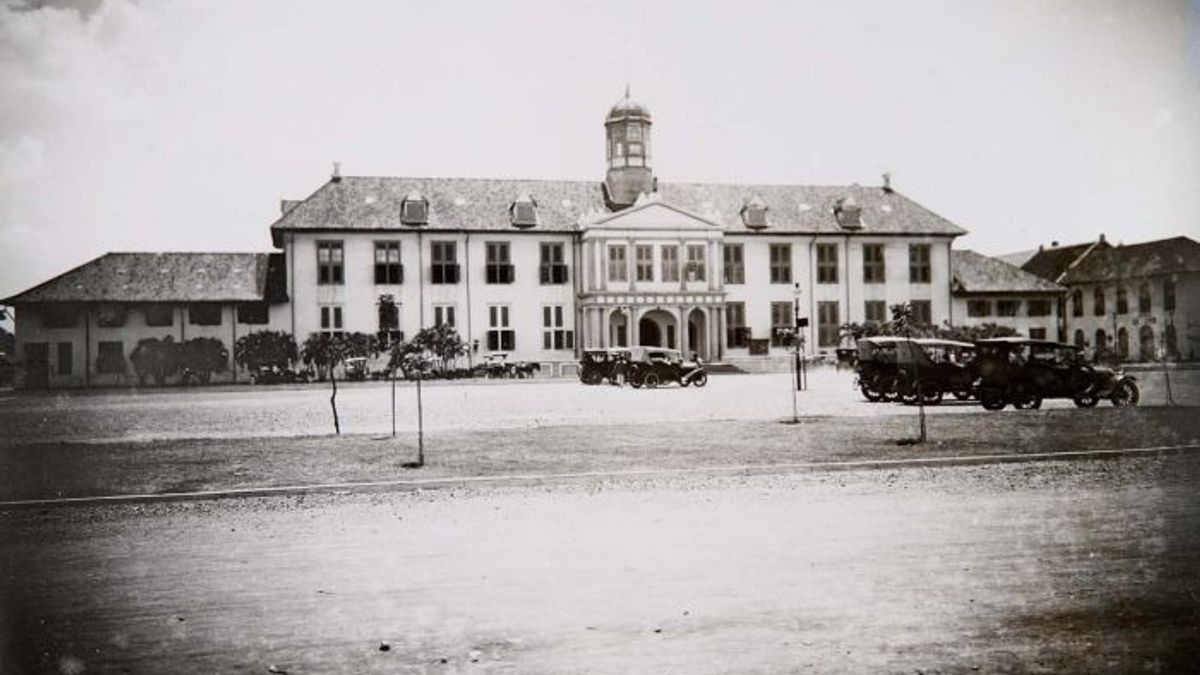JAKARTA - The power of the Dutch trading airline VOC in Batavia is full of dynamics. They built Batavia to resemble a city in the Netherlands. In fact, the pattern is almost the same. The construction of the VOC City Hall, which is now the Jakarta History Museum, for example.
City Hall was made to resemble the Dam Palace in Amsterdam. The magnificent and iconic building became the center of all matters and complaints. The people of Batavia can also meet officials at the complaint table. Therefore, the VOC City Hall is often dubbed the talk Building.
There are no two ambitions of the VOC to seize Jayakarta. The city has been targeted for a long time. A strategic location is the advantage. The Company also tried to play a strategy of embracing. Various cooperation is carried out. The local ruler, Prince of Jayakarta, is attracted to the advantage of being hoarded with the presence of the Dutch. Siasat was also played when the Prince of Jayakarta began to become complacent.
They tried to sound resistance. Prince Jayakarta was not afraid. Britain's presence on his side was considered quite helpful. The Dutch did not give up. The option of a shortage of troops made the VOC leader go to Maluku to bring an additional war fleet. Jayakarta fell in the hands of the VOC in 1619. They also changed Jayakarta to Batavia.
The owner of power wants to build Batavia like a city in the Netherlands, Amsterdam. Full of canals with rows of beautiful houses. The center of power was also made: Kasteel Batavia and the VOC City Hall. The first city hall building is located near Kali Besar. The VOC built it in 1620. However, the presence of the city hall was not optimal.
The city hall was demolished due to an attack from the Mataram Kingdom. Instead, the second city hall near Kali Besar was built. However, the building was not sturdy. Finally, the third VOC City Hall was built in the same location (location that is now the Jakarta History Museum). The building is designed to resemble the Dam Palace in Amsterdam.
The third city hall building has a simple pattern with proportions that are in line with neo-classical style. The building design was carried out by the chief repairman at the shipyard WJ van de Velde. The building was built within five years (1707-1712) by contractor J. Kemmer of Brandenburg (Germany). He anemer and owner of six houses, 13 lots and 26 slaves. He won the tender because of his experience and rather cheap prices.
Natural rocks for the door thresholds are imported from China and Korombel, iron from Japan, window glasses from France and nails as well as iron from the Netherlands. Costs are covered by new taxes. for potehi wayang, cockfighting, home, and yard (vaste goederen) in the city and every sugar cane mill in ommelanden. The income is a lot of money, making it adequate to build both lower wings, explains historian Adolf Heuken in the book Historical Places in Jakarta (2016).
The presence of the city hall has an important meaning for the growth and development of the VOC. The building became an administrative center in Batavia. Sometimes it is also used for all affairs. City halls are sometimes transformed into centers of government, courts, civil records, prisons, and even churches on holidays.
The most important point of the presence of the city hall is none other than a meeting center. An encounter between the people of Batavia (Europeans, bumiputra, Chinese, to Arabs) has affairs with local officials. They entered the city hall and immediately docked to the complaint table.
Complaint tables are usually placed in special rooms. The people of Batavia can perpetuate anything, including asking for permission to build up to tax matters. This function made the city hall dubbed by local residents as a Talk Building. A building where people can speak directly to officials.
The nickname The talk Building continues to be famous as the city of Batavia progresses. Moreover, massive land clearing was carried out. The intensity of the people of Batavia visiting the Talk Building is increasing. However, the opportunity to hear people's complaints is often used to enrich themselves by VOC employees.
They often perpetuate illegal levies. As a facilitating affair, he thought. Corruption has been going on for generations. Most of those who are dealing in the Building talk about not being dizzy. They just give pelicin money so that things run smoothly. The Gaung was even felt until the early 20th century. The Dutch soldier from Amsterdam HC.C. Clockener Brousson agreed.
To the Building Talk, as ordered by Abdullah and after a few lashes, the horses were walking. 15 minutes later, we arrived Stadhuisplein and there was the Talk Building, as the Batavian residents called it. Named the house of speech because in that place bumiputra and Vreemde Oosterlingen can talk to officials. The building is Dutch-style. On the front wall of the building, in the early right corner of construction, namely on January 25, 1707 and continued in 1710.
Stadhuis' name came at the time when Batavia was ruled by College van Schepenen (City Government Manager) in the old Dutch era. It is now the office of Binnenlandsch Bestuur (Domestic Government) and the police station. The building is a large white-painted building with two levels and has a large window with green-painted covers. But that's not what gives rise to a beautiful impression. Right in front of the building there is a stage where the death penalty is held and sometimes opened to killers who commit crimes, "HCC Clockener Brousson's story in the book Batavia Early 20th Century (2017).
The English, Chinese, Japanese, Arabic, and French versions are automatically generated by the AI. So there may still be inaccuracies in translating, please always see Indonesian as our main language. (system supported by DigitalSiber.id)








